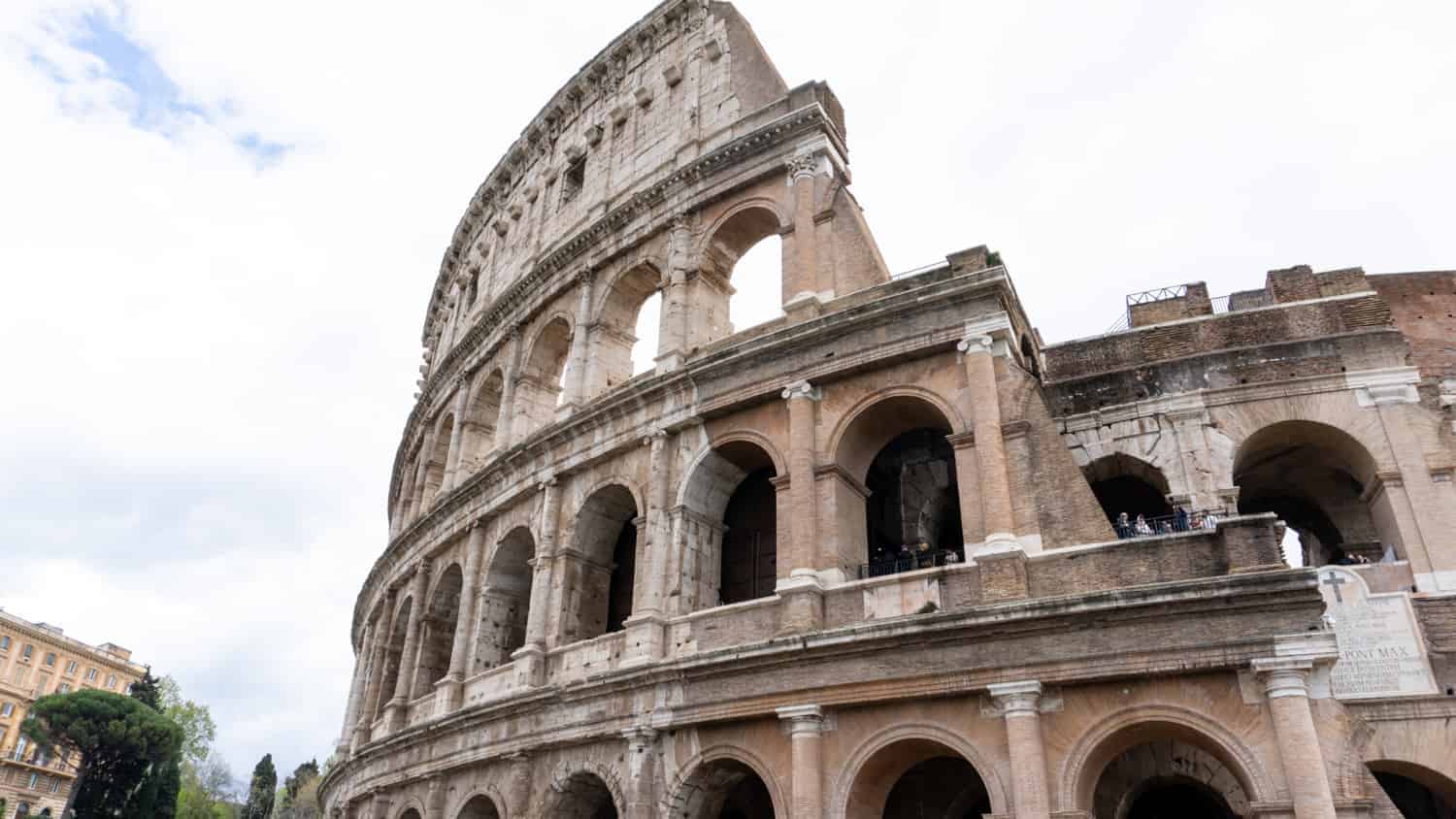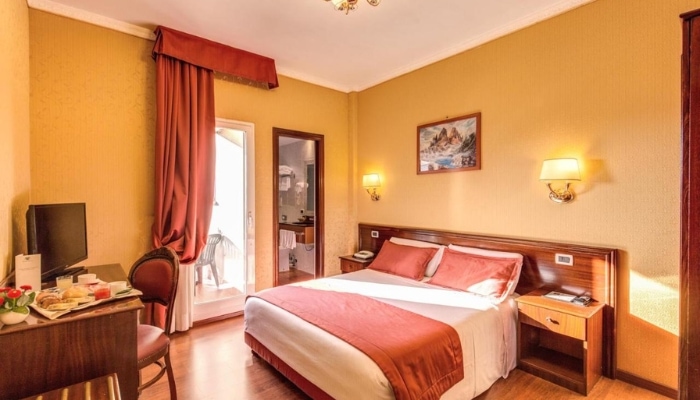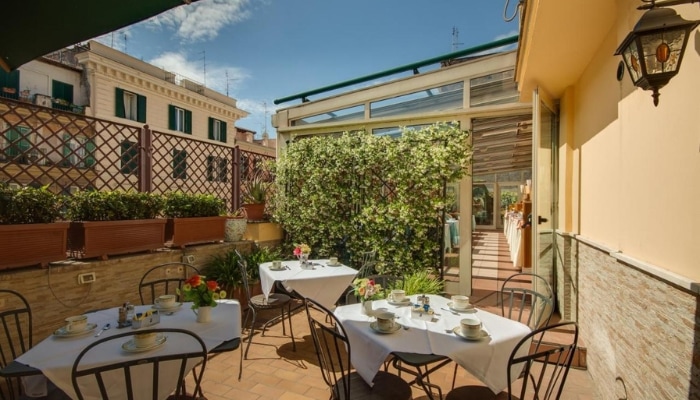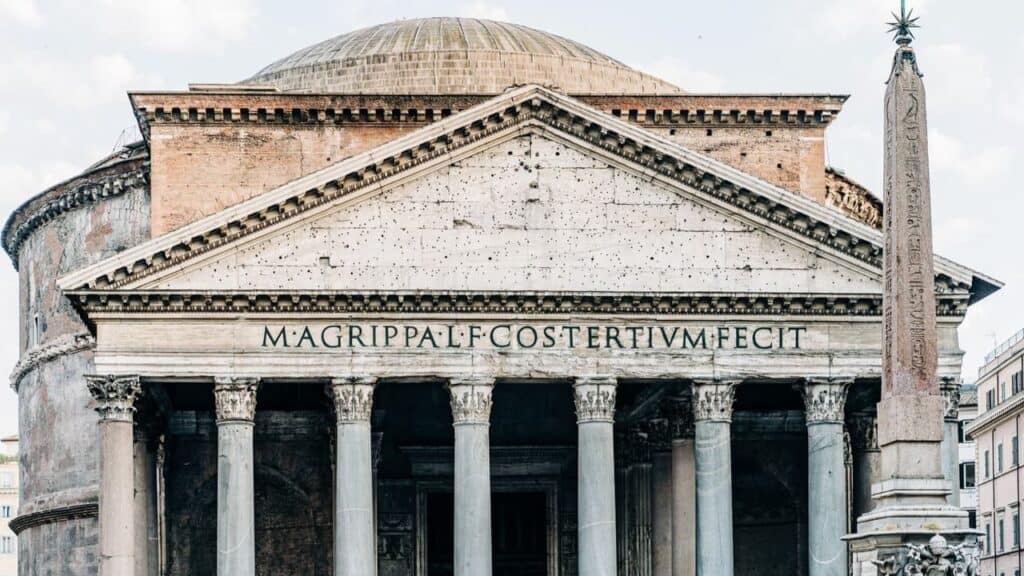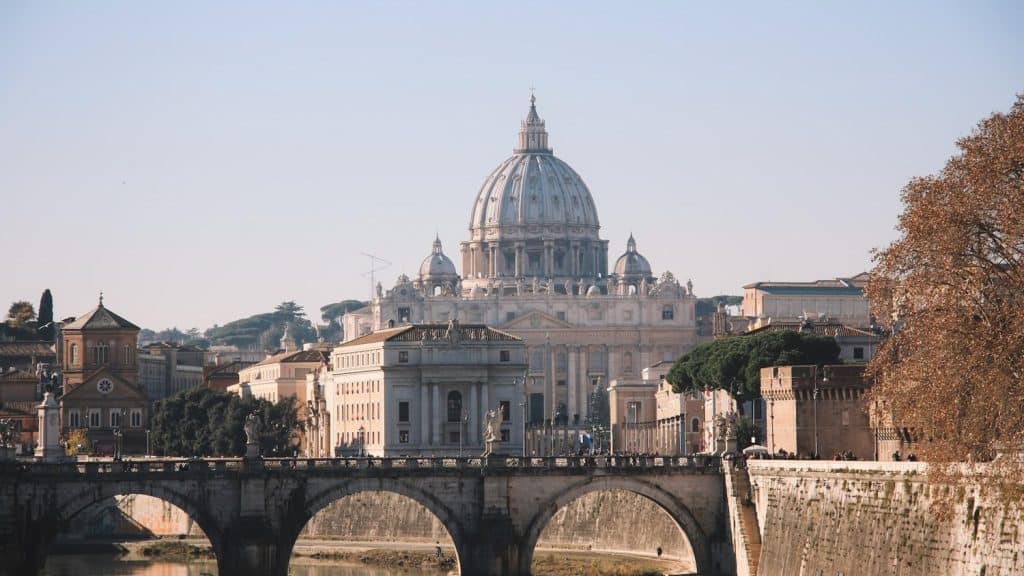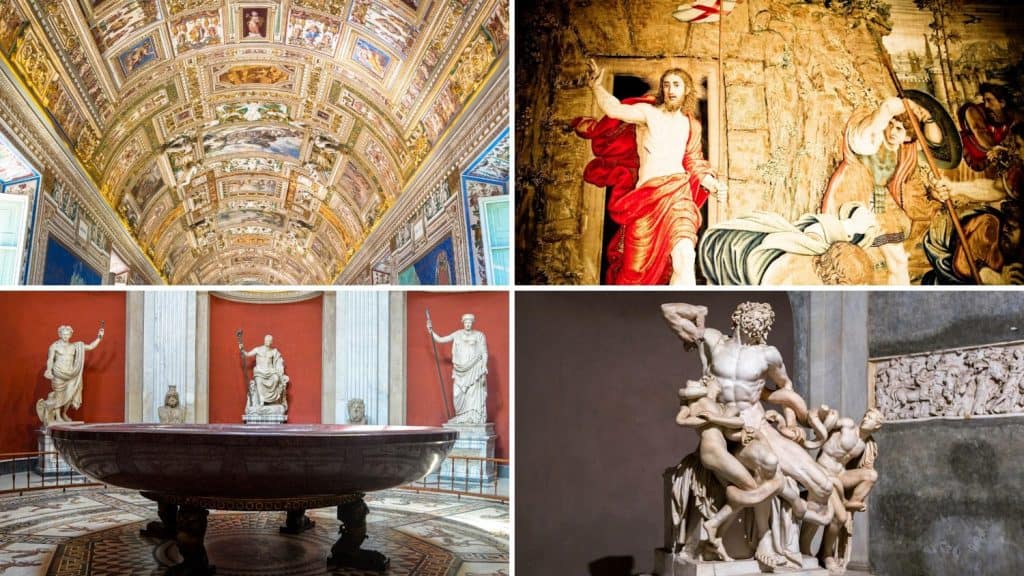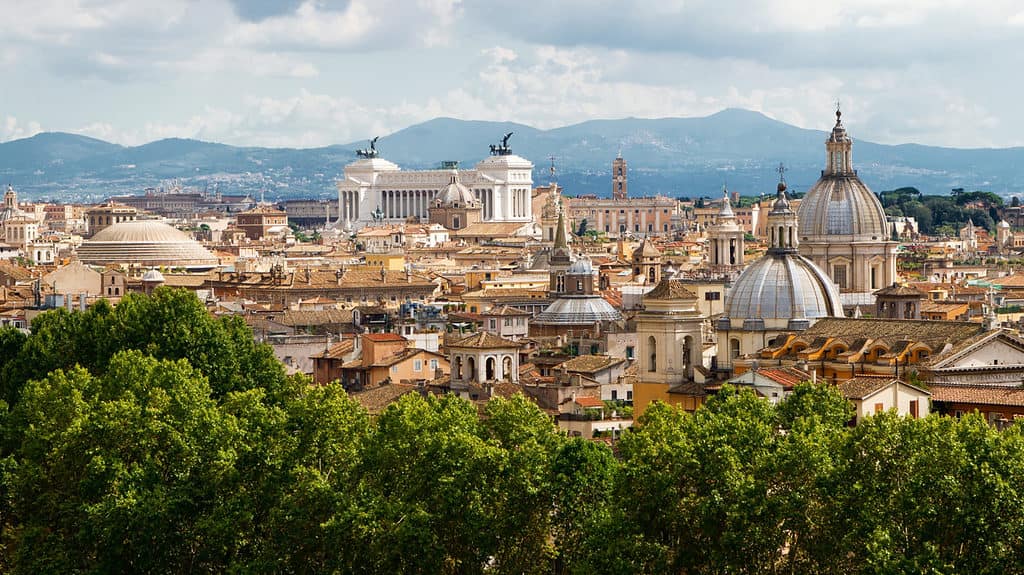What are the opening hours, admission fees, or entry procedures for the Colosseum in Rome? This guide is based on our own experience and official sources for 2024.
Colosseum. We all long to see him. We wanted to see it so much that we ran here with our backpacks on our backs during our first visit. And we were impressed. And a second time.
The Colosseum is one of those places that surpasses expectations. Unless you count the trash around here and the many street vendors with selfie sticks.
We update admission fees, opening times and other useful information for the Colosseum in Rome several times a year. The latest update is always listed at the beginning of the article.
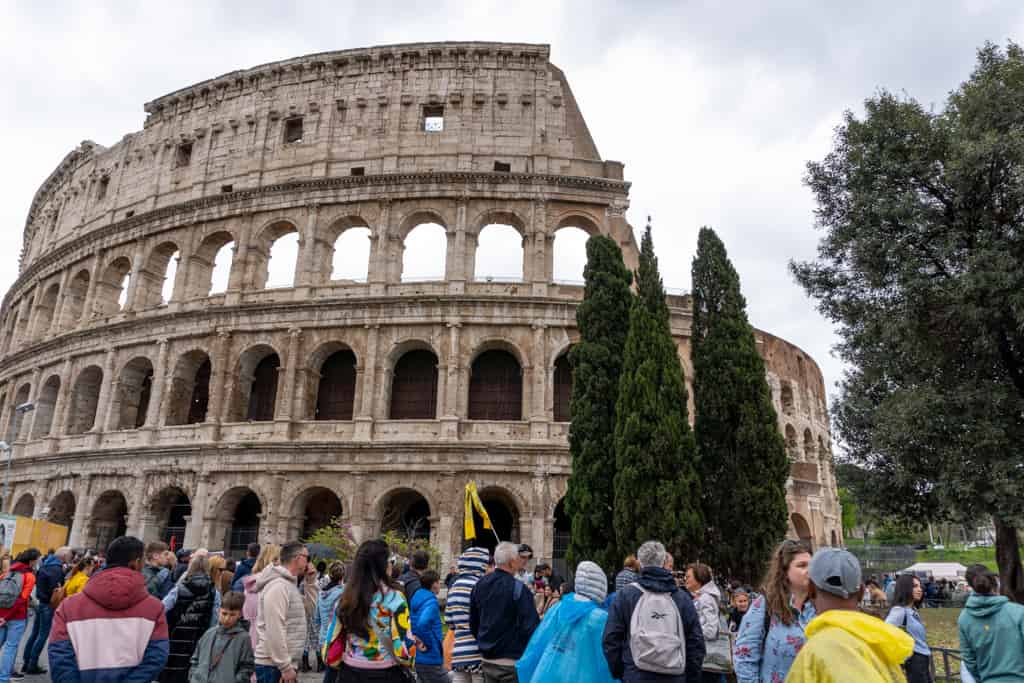
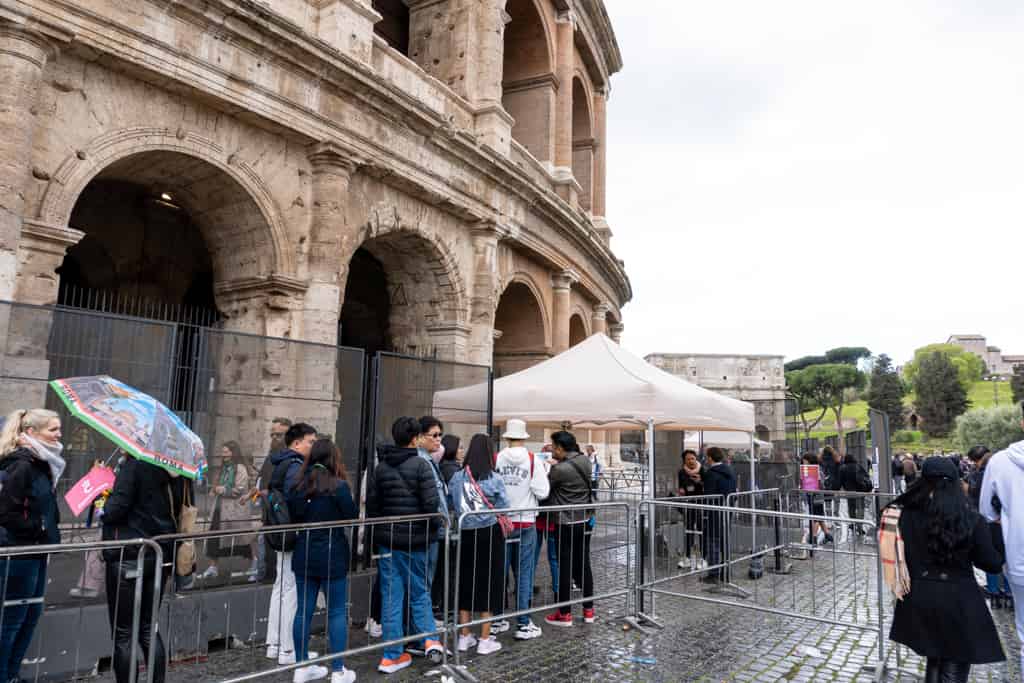
Colosseum – basic information
Admission to the Colosseum
Full admission to the Colosseum is €16 and reduced admission is €2 for EU citizens 18-25 years old. Free admission for everyone under 18 and those who have purchased a Roma Pass and wish to take advantage of the free admission. A booking fee must be added to the entrance fee.
You can book your tickets here – you choose a specific time to enter the Colosseum. Your ticket to the Colosseum also includes the Forum Romanum and Palatine Hill, which you can visit at any time within 24 hours.
Please note: Children under 18 years of age and disabled persons with an accompanying person are admitted free of charge and are no longer required to book tickets online from May 2023. Pick up your ticket at the box office inside the Colosseum.
From 15. On May 2023, you can now buy tickets on the spot – the number of tickets is limited and works on a first-come, first-served basis.
Skip-the-line tickets to the most popular sights in Rome:
What to do if tickets to the Colosseum are sold out?
A common thing in Rome – tickets for the Colosseum and other places can sell out weeks in advance. Check current availability here.
If there are no available dates and you want to make sure you get in, another option is a guided tour. An increasingly popular option to visit the Colosseum, as the guide will help you get your bearings quickly. Here you will find all the options to visit the Colosseum.
Tickets to the Colosseum – You can then print them out or simply scan them from your mobile phone on entry. If necessary, tickets can be cancelled 24 hours in advance. At the Colosseum, you go through the entrance reserved for individuals – it’s a queue on the right (the left is for guided tours).
How to save when visiting the Colosseum in Rome
The Roma Pass is the official tourist card in Rome and a very popular way to save money on sightseeing and transport in Rome.
The card includes free admission to 2 selected venues (I recommend choosing the venues with the highest admission fees – Colosseum, Borghese Gallery, Capitoline Museums, etc.) and discounts on admission to most other venues in Rome. The Roma Pass does not include the Vatican.
Also included is unlimited transport in Rome, which includes both metro and buses.
If you are interested in the Roma Pass, read our experience in our previous article about the Roma Pass (opens in a new window).
Colosseum attractions
The Colosseum is the symbol of Rome with its 2000 years of history. In 2018, it was visited by 7.7 million people, making it the 5th most visited colosseum in the world. the most visited monument in the world.
It’s the largest amphitheater that humans have built. It has survived earthquakes, fires, wars and riots. It was a place where gladiatorial fights or fights with animals took place. The Colosseum was even flooded for the staging of naval battles.
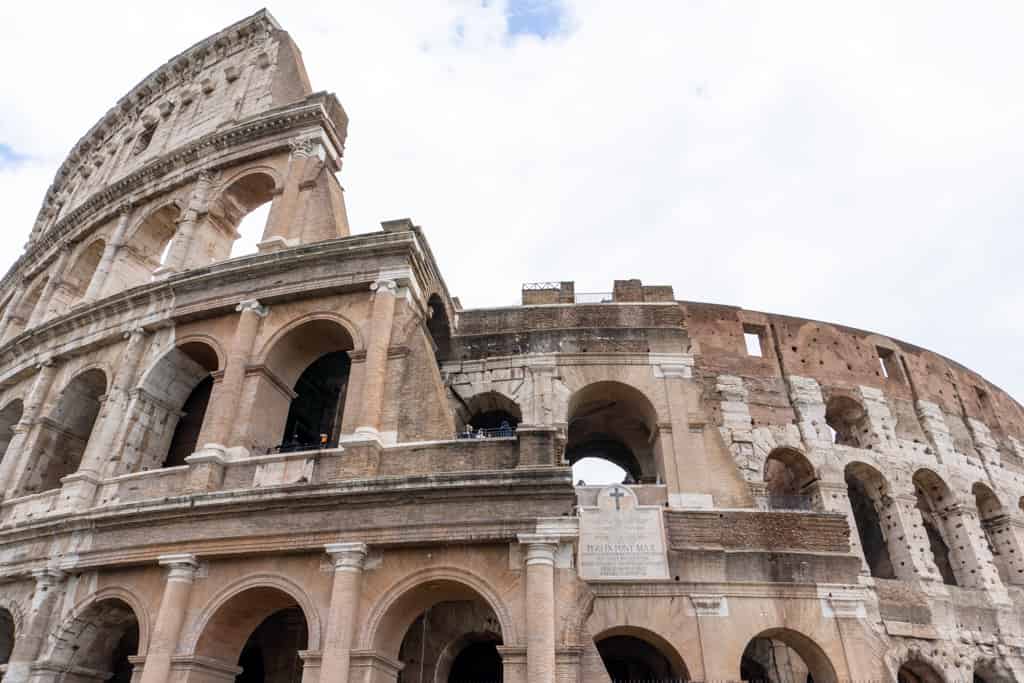
Interestingly, the Colosseum was not always the Colosseum. In 80 AD it was built by Vespasianus, who was the founder of the Flavian dynasty. This gave the amphitheatre the name Flavian Amphitheatre.
even today, reason remains a constant. The Colosseum in Rome is a perfect example of ancient engineering – it has numbered entrance arches and seating in three steep tiers, with children and women sitting in the highest part.
The Colosseum could hold up to 80,000 spectators, who were shaded by a canvas awning. Under the arena, a network of underground passages(hypogeum) was created, which served as an underground entrance for gladiators and an enclosure for animals.
HOW TO GET FROM THE FIUMICINO AIRPORT TO THE CITY CENTRE: Private transfer from the airport is the most convenient way to get to Rome. Buses are the most popular mode of transfer – there are several carriers to choose from, with buses being the most reliable SIT Bus-Shuttle. They stop near the Vatican and Termini Station. Just show your ticket on your mobile phone on the spot. The advantage is that if you miss the original connection, you can take the next one without any problems. The third and fastest option is Leonardo Express trains.

For more than 500 years, the Flavian Amphitheatre was the centre of entertainment for the Romans. Exotic animals were exhibited here, gladiator fights or prisoner executions took place here.
It was not until the Middle Ages that the name of the amphitheatre was changed to the Colosseum. The reason was simple. Near the amphitheatre stood a statue of the Roman emperor Nero, and the Colosseum was intended to refer to the colossal size of this statue.
You might be surprised how much of the Colosseum is missing. This was caused in part by disuse and earthquakes.
But the second reason is more interesting and surprising given how valuable the Colosseum is today. The local marble was used for the construction of other buildings, such as the Vatican.
Tip: If you have some time left, go to the Colosseum late in the evening. We were surprised how few people were here. The Colosseum is beautifully lit in the evening and gives off a different atmosphere than during the day.
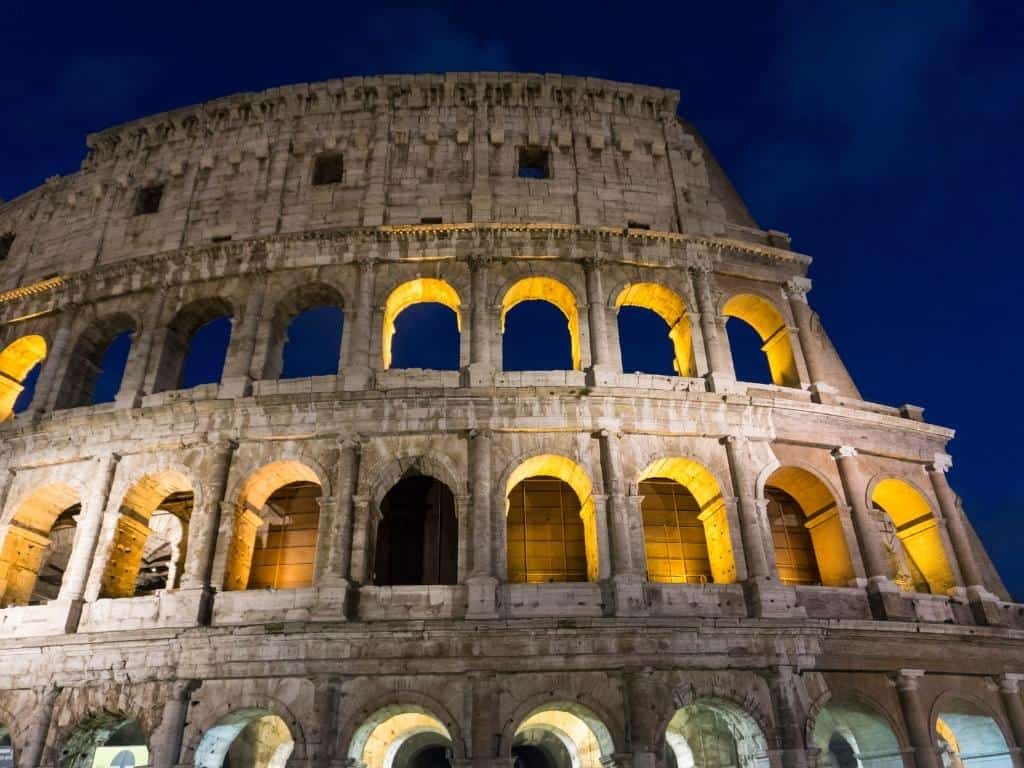
Palatine Hill and Forum Romanum
Palatine Hill and the Forum Romanum are just opposite the Colosseum. You can visit all 3 places within one ticket.
Palatine’s hill
Palatine Hill is the mythical birthplace of Rome. Here, according to legend, in 753 BC. Romulus founded the city. Later it became the residence of the imperial palace, rich patricians and celebrity generals.
The word palace is derived from the Latin for hill or palatium.
Palatine Hill, as we see it today, is mostly made up of ruins from the vast palace of Emperor Domitian. To the north-east, the balcony offers a great view of the Roman Forum.

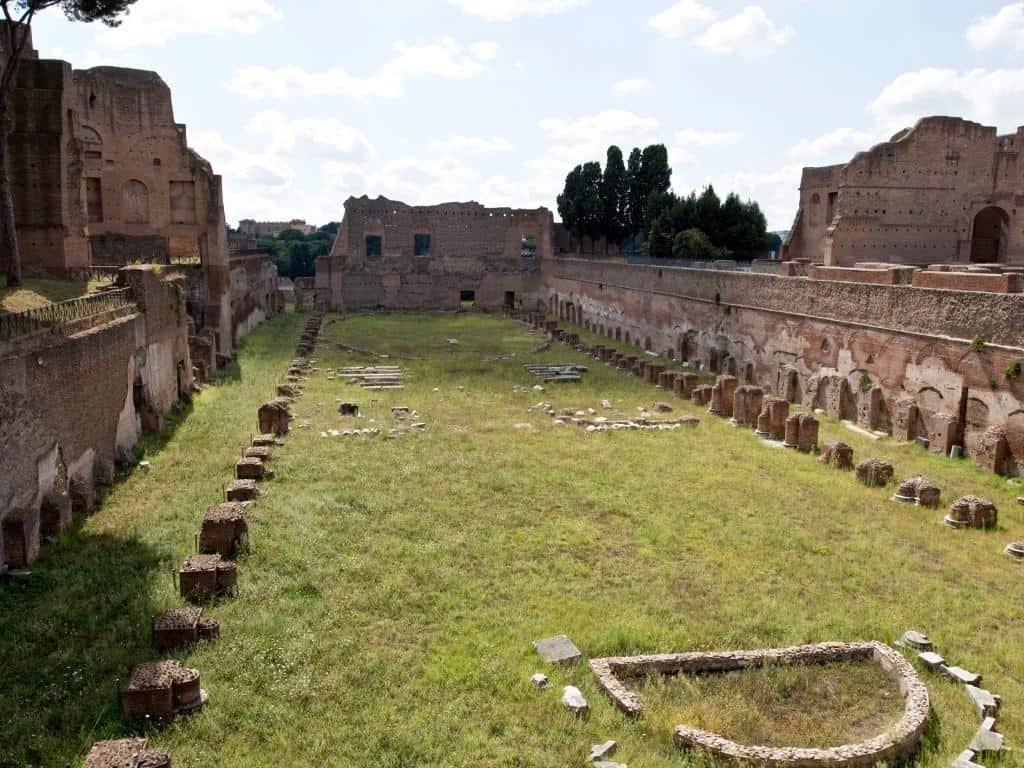
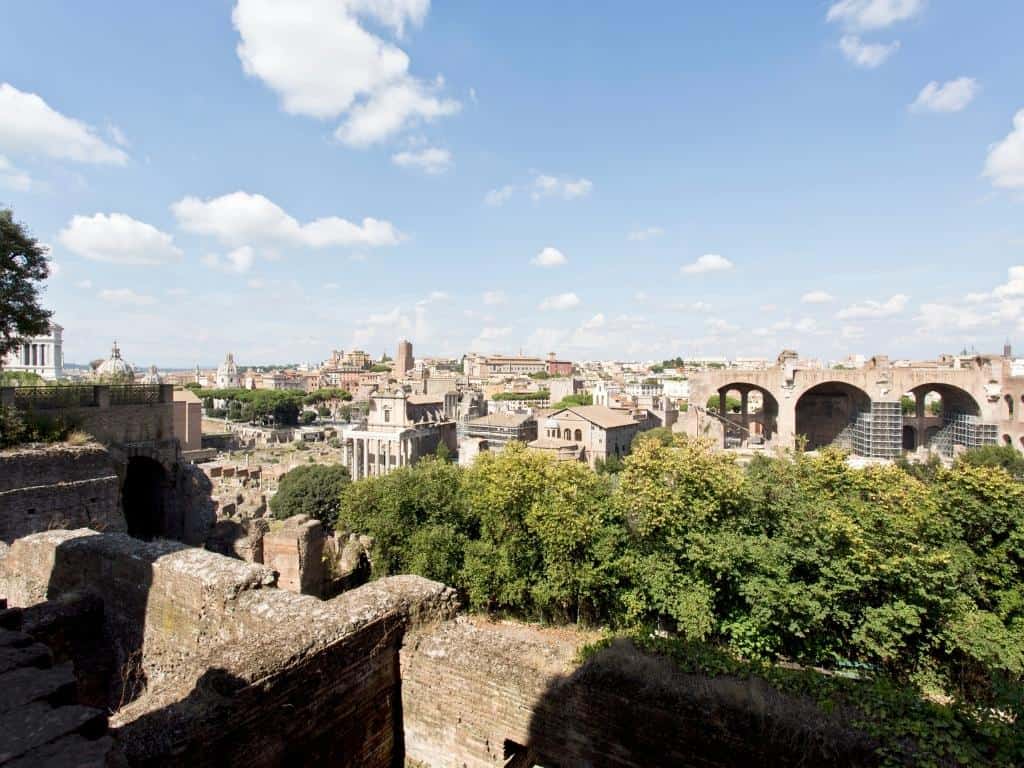
Forum Romanum
The Forum Romanum is a vast ruin between the Palatine Hill and the Colosseum. It used to be the centre of public life in Rome.
The ruins form a complex of large temples, courts, offices and public squares, several of which are still in excellent condition. You will visit the original seat of the Roman Senate, the Arch of Titus, the Knox Fortress, the columns of the Temple of Saturn or the Temple of Caesar, where Caesar was burned after his assassination in 44 BC.
The Forum Romanum and Palatine Hill are definitely worth a visit.
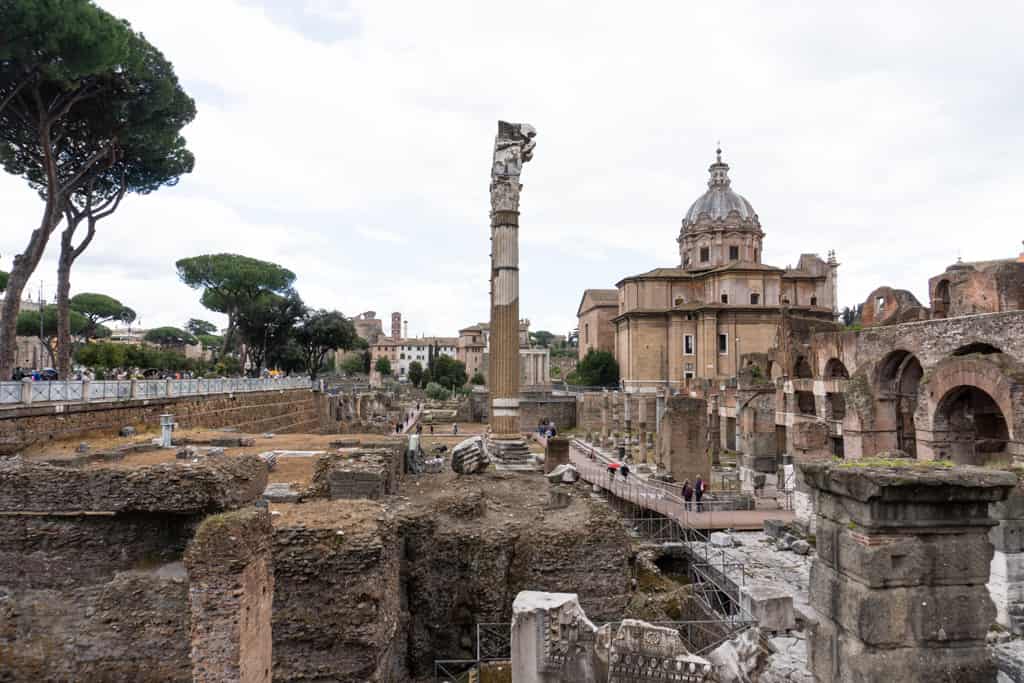
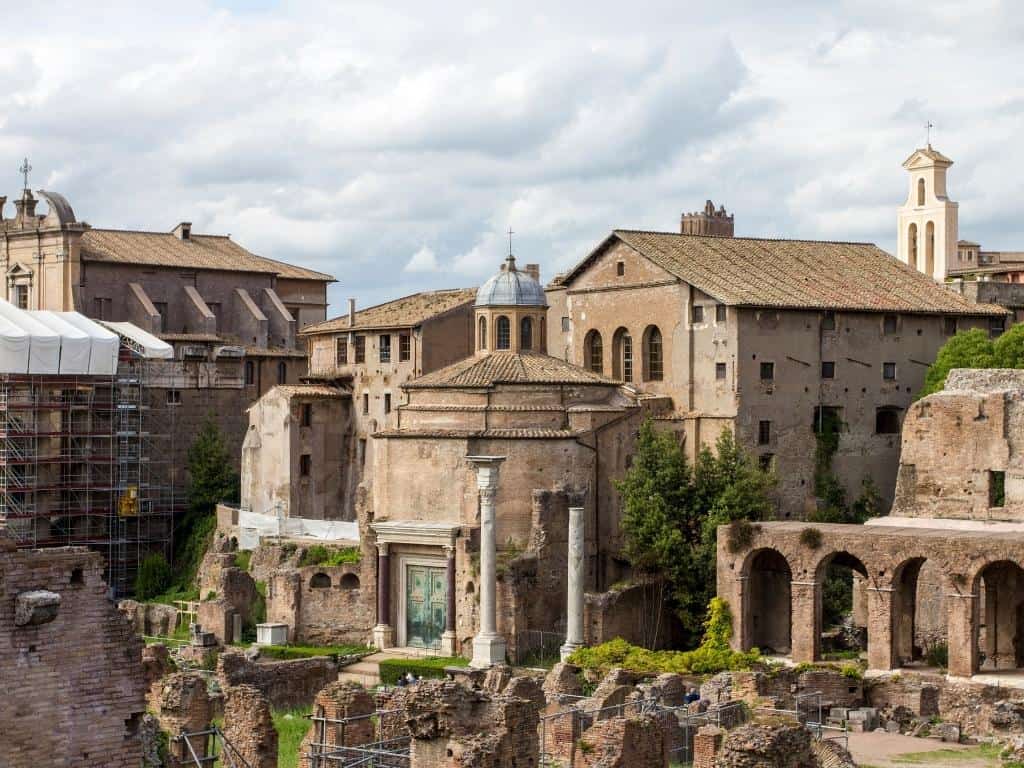
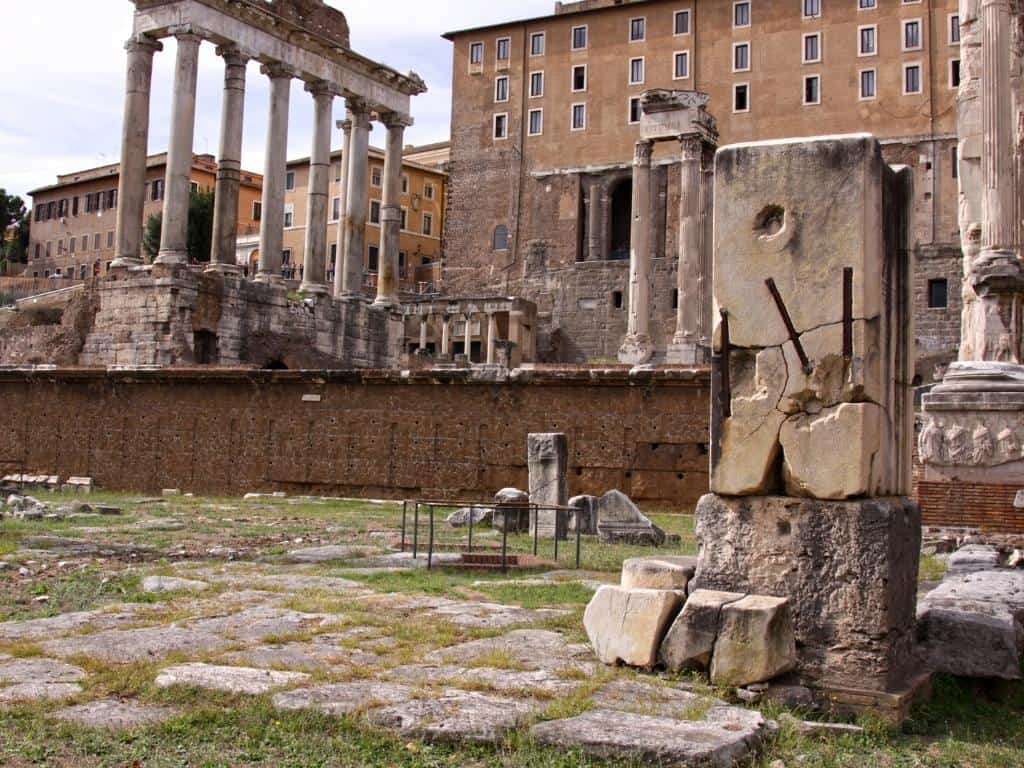
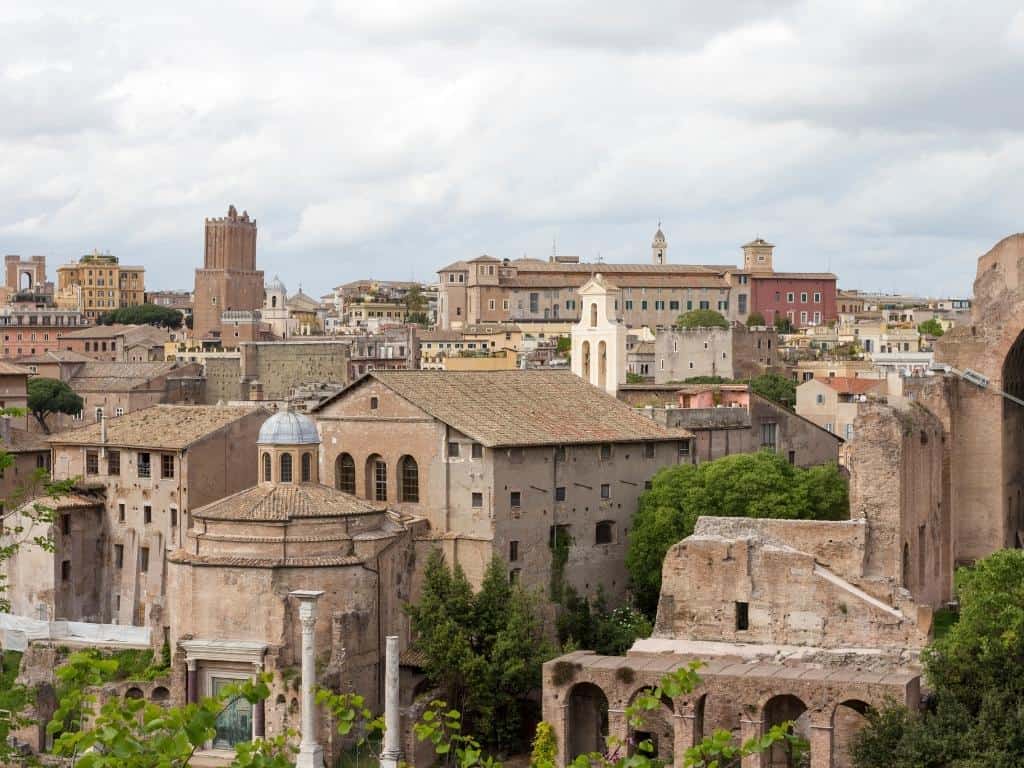
Where is the Colosseum in Rome?
The Colosseum dominates the small Piazza del Colosseo in the centre of Rome. The Forum Romanum with the Palatine Hill is just opposite. Between them is the Arch of Constantine, built in 315 to commemorate the victory of Constantine I the Great at the Battle of the Milvian Bridge.
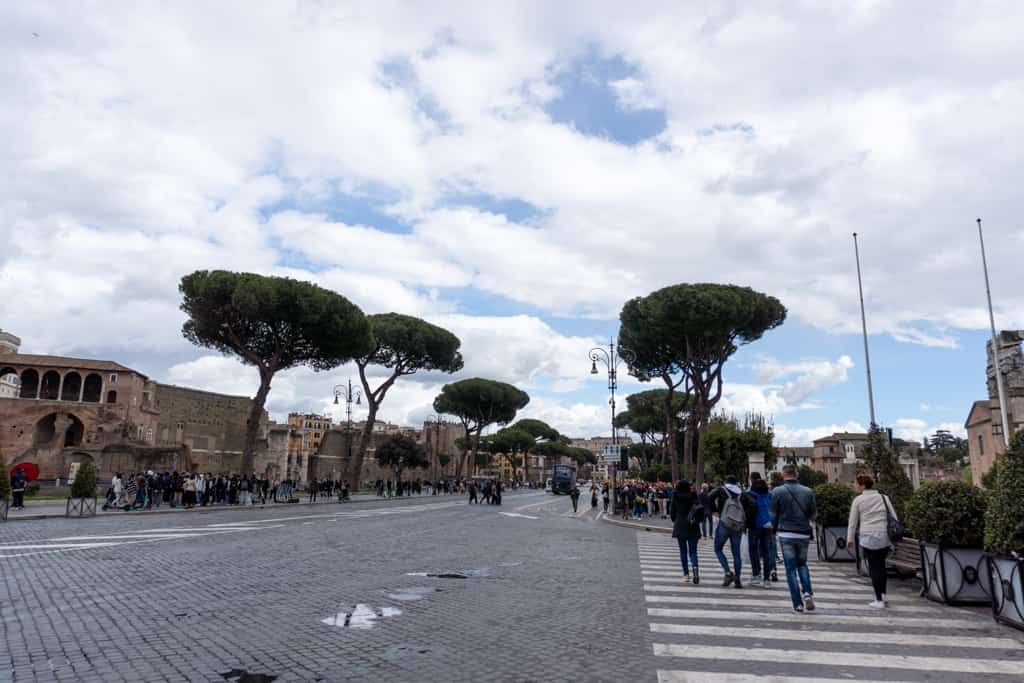
How to get to the Colosseum in Rome?
The Colosseum is very accessible from Termini Central Station. You can walk here in 20 minutes. If you go through the Parco del Colle Oppio, you can enjoy the Colosseum from a different perspective and without people.
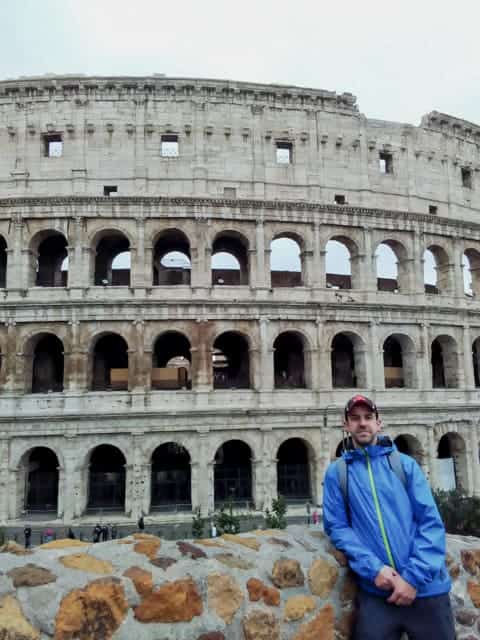
In addition, there are other remains of the ancient Roman period in the park. There’s also a lot of leftover rubbish, but you soon get used to that in Rome. Rome is a long way from slick Dubai.
- Metro line B – Colosseo stop
- Bus – lines 75, 81, 175, 204, 673
- Tram – line 3
You can buy public transport tickets at newsagents, newsstands or vending machines. It will cost you 1,50 € (valid for 100 minutes, or you can buy a pack of 10 tickets for 15 €). Another option is to buy day tickets with unlimited travel around Rome:
- 7 € – all public transport connections valid for 24 hours
- 12,50 € – all public transport connections valid for 48 hours
- 18 €– all public transport connections valid for 72 hours
Note: Valid from the first validation.
Entrance
You must be at the Colosseum at least 15 minutes in advance. It’s a hustle and bustle. There’s a mix of individuals and various guided groups, so it’s best to set aside a few minutes to get your bearings. In addition, there is a security check before you enter.
You will be let in at the time you have chosen in your reservation. This does not apply to the Forum Romanum and Palatine Hill, which you can go to before or after visiting the Colosseum – you do not book a specific time here.
The Colosseum has a total of 3 entrances. You go through the entrance for individuals – everything is marked. The Forum Romanum and Palatine Hill can be reached just past the Arch of Constantine on the right – Via di San Gregorio 30.
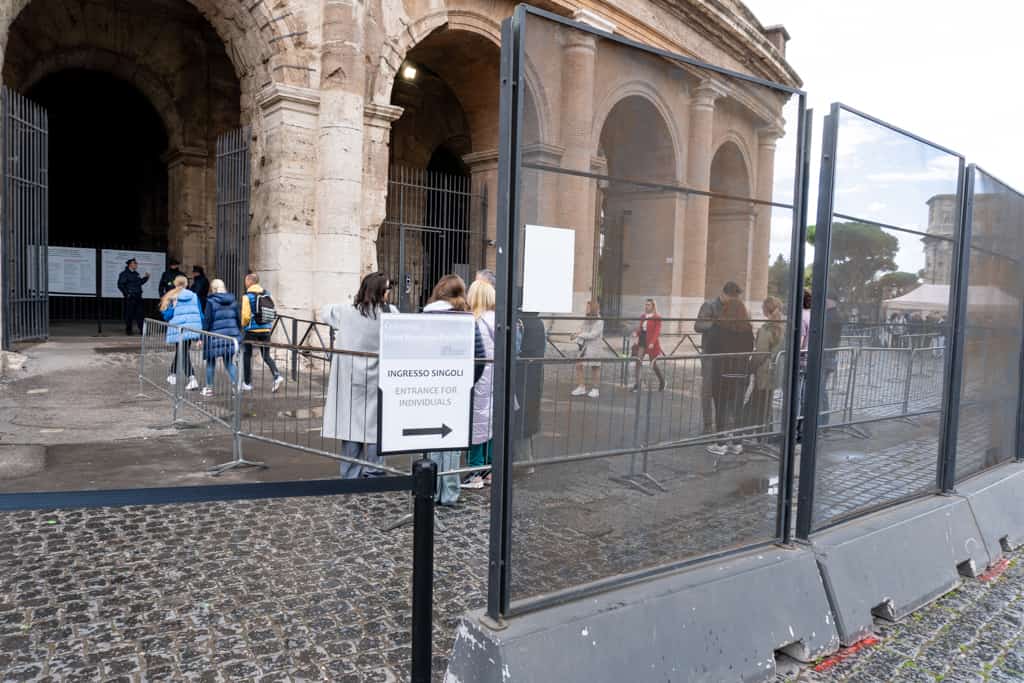
Prepare a ticket (printed or on your mobile phone) to be scanned before entering. You will also be subject to a security check. You can bring a small backpack/bucket and a plastic water bottle.
What you can’t take to the Colosseum:
- Large backpacks and suitcases
- Tripods (selfie sticks tolerate)
- Dark and glass bottles
- Alcohol
- Spray
Set aside about an hour or two to visit the Colosseum. For the adjacent Forum Romanum and Palatine Hill, 2-3 hours. You’ll be walking a lot, so don’t forget comfortable and sturdy shoes, even in summer. But that goes for all of Rome, which is characterized by uneven cobblestone sidewalks.
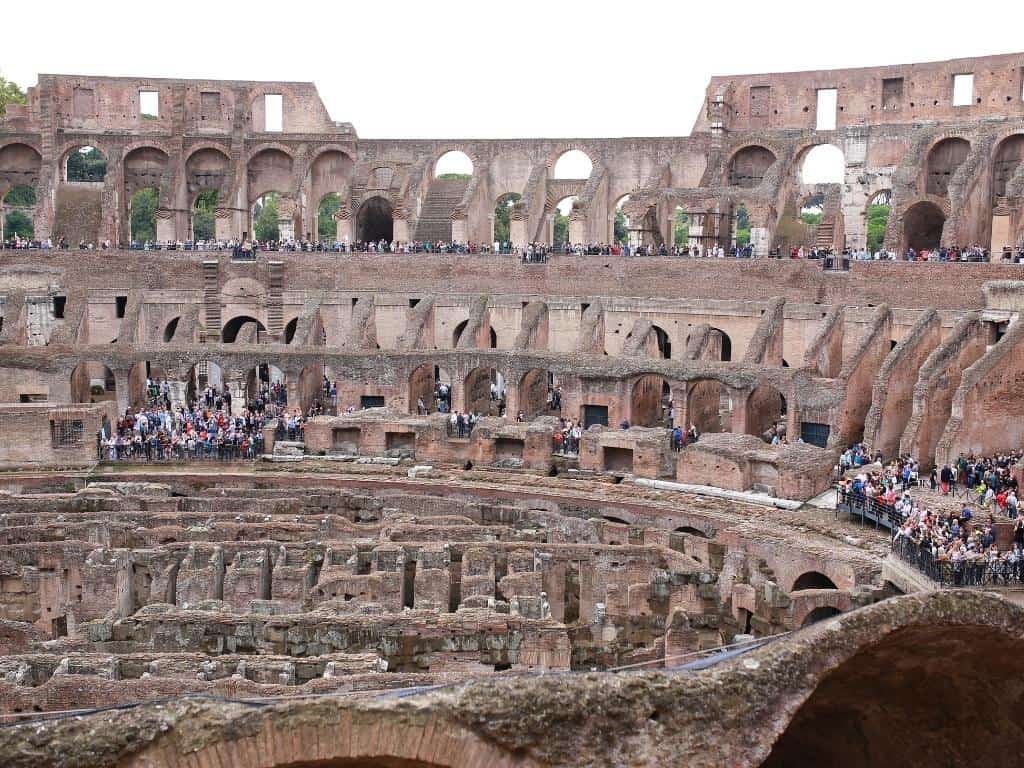
Opening hours
The opening hours of the Colosseum in Rome vary according to the season. You will see the current opening hours when you book your ticket online – advance booking is compulsory. The last entry to the Colosseum is always one hour before. Closed 1.1. a 25.12.
Opening hours of Kolosea:
- 2 January – 28 February 9:00-15:30
- 1 March – 25 March 9:00-17:30
- 26 March – 31 August 9:00-19:15
- 1 September – 30 September 9:00-19:00
- 1 October – 28 October 9:00-18:30
- 29 October – 31 December 9:00-16:30
Admission and tickets
It is better to book tickets to the Colosseum in advance. From 15. May 2023, you can now buy tickets on the spot – the number of tickets is limited and works on a first-come, first-served basis. If you want to make sure you get in, you need to book a ticket in advance.
The ticket for the Colosseum also includes entry to the Forum Romanum and Palatine Hill. You can only enter each monument once. Forum Romanum and Palatine Hill form one archaeological park with one entrance.
You can choose between 2 types of tickets. The amount of the entrance fee is then determined accordingly.
The standard ticket includes access to I. and II. level of the Colosseum. Admission prices are as follows:
- Full admission 16 € + 2 € for online booking
- Reduced admission for EU citizens 18-25 years old including 2 € + 2 € for online booking
- Free admission for under 18 and disabled with an accompanying person – from May 2023, no advance booking is required and tickets can be collected at the box office inside the Kolosseum
- Free admission with Roma Pass + 2 € for online booking
Note on the reduced price for EU citizens 18-25 years old: You only need to show your age ID when entering the Colosseum. You don’t have to be a student and you don’t need an ISIC card. I personally verified this information directly with the staff of the Colosseum.
Already within the standard ticket you see enough and for most tourists it is enough. If you want to see even more, check out the Extended Full Experience ticket . This will grant you access to the arena and underground. Admission prices look like this:
- Full admission 22 € + 2 € for online booking
- Reduced admission for EU citizens 18-25 years 2 € + 2 € for online booking
- Free admission for under 18 years of age
- Admission for Roma Pass holders – only the standard ticket is included in the Roma Pass, not the extended ticket.
Booking tickets for the Colosseum
You can print out your Colosseum ticket reservations or simply scan them from your mobile phone at the door. At the Colosseum you will go through the entrance reserved for individuals.
If you prefer a guided tour there are several to choose from.
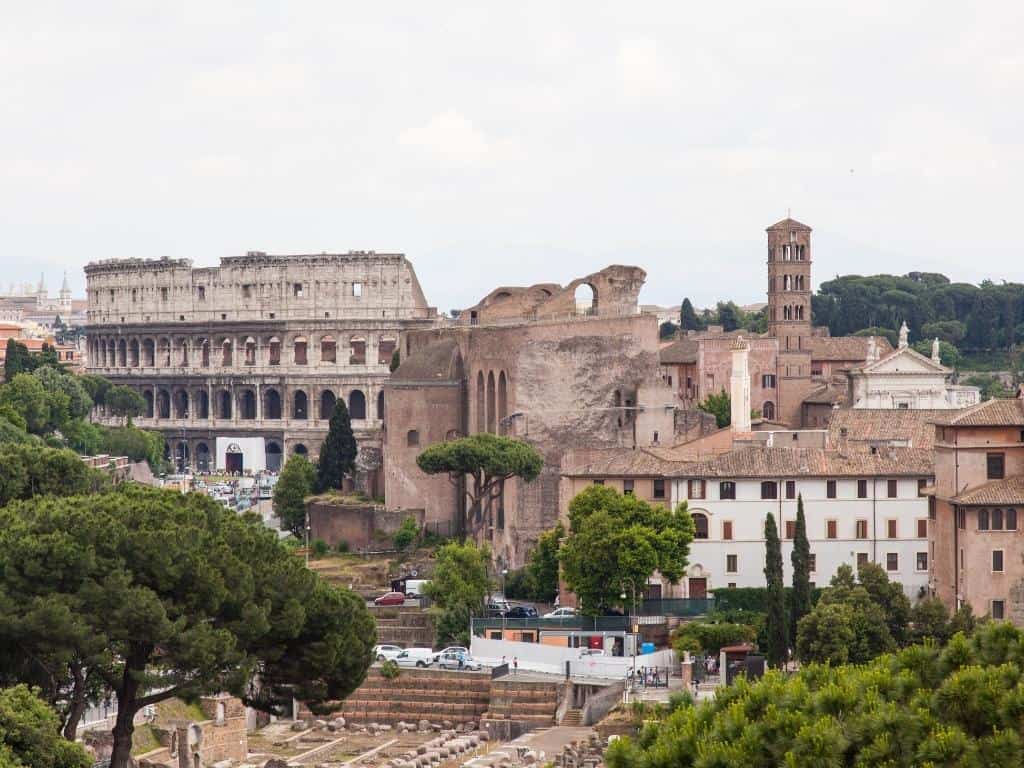
When to visit the Colosseum?
I recommend going to Rome in the winter – from the second week of January to the end of February (the number of tourists increases a bit around Valentine’s Day). Airfares and accommodation are the lowest and the fewest tourists in the whole of Rome. You will enjoy the atmosphere of the Eternal City much more peacefully.
Temperatures in Rome rarely drop below freezing. In addition, it is often sunny here and in winter you can enjoy temperatures like in our autumn.
Want warmer weather but smaller crowds? Visit Rome from mid-October to November or from mid-March to early May.
In spring, just watch out for Easter, when the Colosseum closes early on Good Friday for the parade. Although it is open on Easter Sunday and Monday, the Vatican Museums are closed, so many more tourists head to the Colosseum.
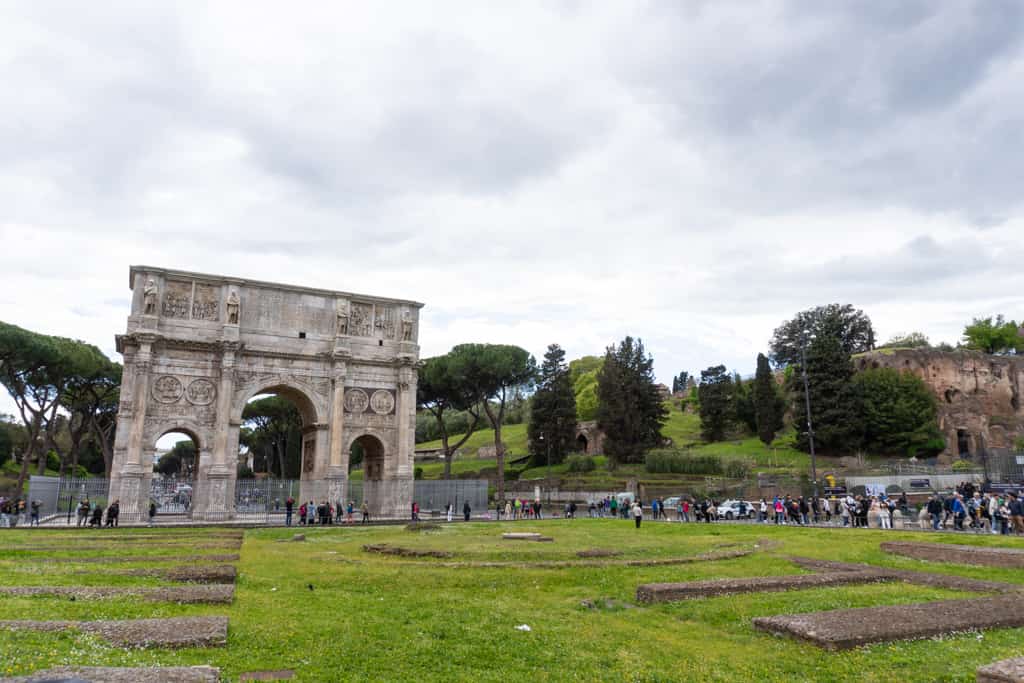
I do not recommend visiting Rome during the holidays. Especially in August, when the temperatures in Rome soar really high. Even Italians themselves go to the sea or to the mountains during this period. Plus, there aren’t many places in the Colosseum where you can hide from the blazing sun.
If you plan to visit the Colosseum in the summer, don’t forget sunscreen with SPF, a hat and a scarf to cover your shoulders when you go to the Vatican. Choose light, airy clothing made from natural materials (such as linen, which is wonderfully ventilated).
If you can, plan your visit for early morning or towards the evening when it’s not so warm.
Drinking water is available right outside the metro station, at the exit of the Colosseum, and at several other locations including the Forum Romanum and Palanita Hill. There are also public toilets and benches to relax on.
As for the best time of day to visit the Colosseum, the least number of tourists is early in the morning and then an hour or two before the Colosseum closes. Preferably in the middle of the working week.
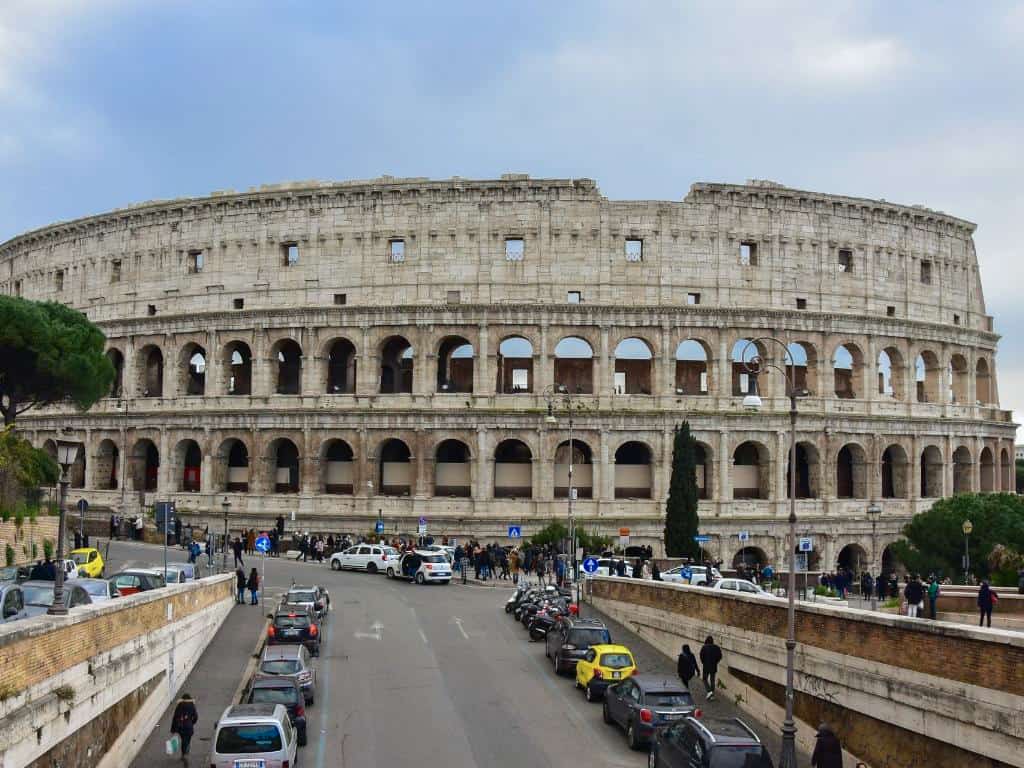
How to save on entrance fees?
There are currently 3 ways to save on Colosseum admission:
Free admission on the first Sunday of the month, but long queues are to be expected.
Visit Rome in the spring (usually mid-March), when Culture Week takes place. The sights are free to visit, including areas that are not normally open to the public. On the other hand, many tourists want to save money, so it’s crowded.
In Rome, you can save money with the Roma Pass. With these, you get free entry to the most famous sights such as the Colosseum, the Castle of the Angels or the Capitoline Museums, and reduced admission to many other places. The card also includes unlimited travel around Rome and use of information points where you can go to charge your phone or use the toilet.
The Roma Pass is available in 3 variants:
- Roma Pass for 2 days (€33) – you get free entry to the first monument you visit and reduced admission to all other monuments you visit within 48 hours. In addition, you can travel around Rome without restrictions for the entire validity of the card.
- Roma Pass for 3 days (€53) – for one price you get free entry to the 2 sights you visit first (such as the Colosseum and the Capitoline Museums) and reduced admission to all other sights you visit during the 78 hours. Plus unlimited transport around Rome.
- Roma Pass in combination with Omnia Card (129 €) – You get all the benefits of the Roma Pass for 3 days, plus access to the Vatican Museums and the Sistine Chapel and a sightseeing bus ride for 3 days that takes you past the best attractions in Rome (you can get off and on at any time if you wish).
For more information, see the previous article on Roma Pass tourist card.

Where to stay near the Colosseum?
- Hotel Impero – cheap hotel with excellent breakfast and roof terrace; older facilities but clean and cosy; quiet at night
- Hotel Borromeo – 3* hotel with air conditioning and roof terrace; minutes from the metro and within walking distance of the historic centre
- The Hive hotel – 4* hotel with modern and clean rooms; rooms and suites for up to 4 people available; spacious roof terrace with seating and restaurant
- hu Roma Camping in Town – accommodation in air-conditioned bungalows or chalets, restaurant, refreshments, free parking, jacuzzi, swimming pool, bar
Hotels in Rome 😴
Where to eat?
You’re guaranteed to get hungry after a tour of the Colosseum. You walk, you enjoy and 2-3 hours are suddenly over. The problem is that the grounds of the Colosseum and the Forum Romanum are so vast that there are no restaurants in the immediate vicinity. But I do have some tips for good food near the Colosseum:
- Li Rioni and Santiquattro , where you can enjoy great pizza and other Italian dishes. They are open daily from 19:00 except Tuesdays.
- At Hostaria I Clementini you can enjoy authentic Roman cuisine. They are open for lunch and dinner.
- Pizzeria di Sforza Piero is the perfect place if you just want to grab a slice of pizza in your hand. They are open all day.
All the restaurants are just a few minutes from the Colosseum towards the Caracalla Baths.
The restaurants closest to the Colosseum and most in plain sight tend to be very touristy. With exorbitant prices, which usually don’t match what they serve you on a plate. If someone calls out to you and beckons you in, avoid the restaurant.
Try going around the corner or in another direction where the locals eat. You’ll enjoy more for less and still support local restaurateurs. About 20-25 minutes west of the Colosseum, the Trastevere district lies across the river. If there’s anywhere in Rome where the cooking is great, it’s definitely here. One great trattoria next to another.
What to visit in the area?
There are a number of places around the Colosseum that are definitely worth a visit too. For myself, I can recommend the Baths of Caracalla (first photo below), built by Marcus Aurelius in 212-216 and one of the largest and most interesting thermal complexes in antiquity.
In the second photo you can see Trajan’s Market (second photo), the first Roman shopping centre, which had 6 floors and 150 different shops and apartments.
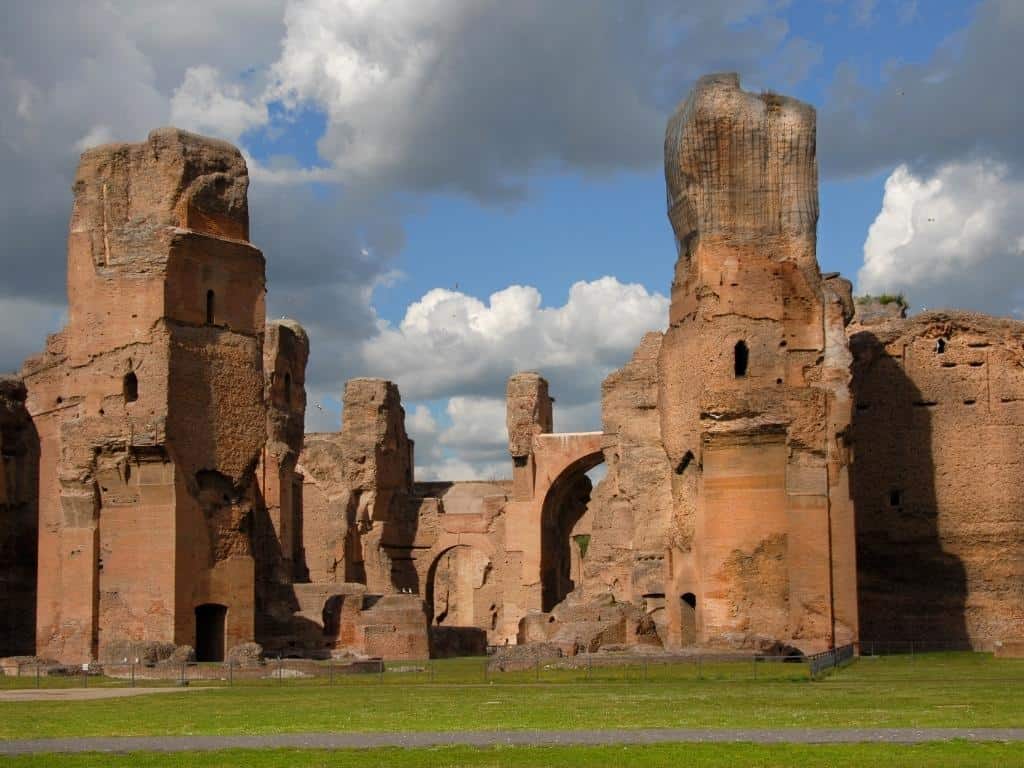
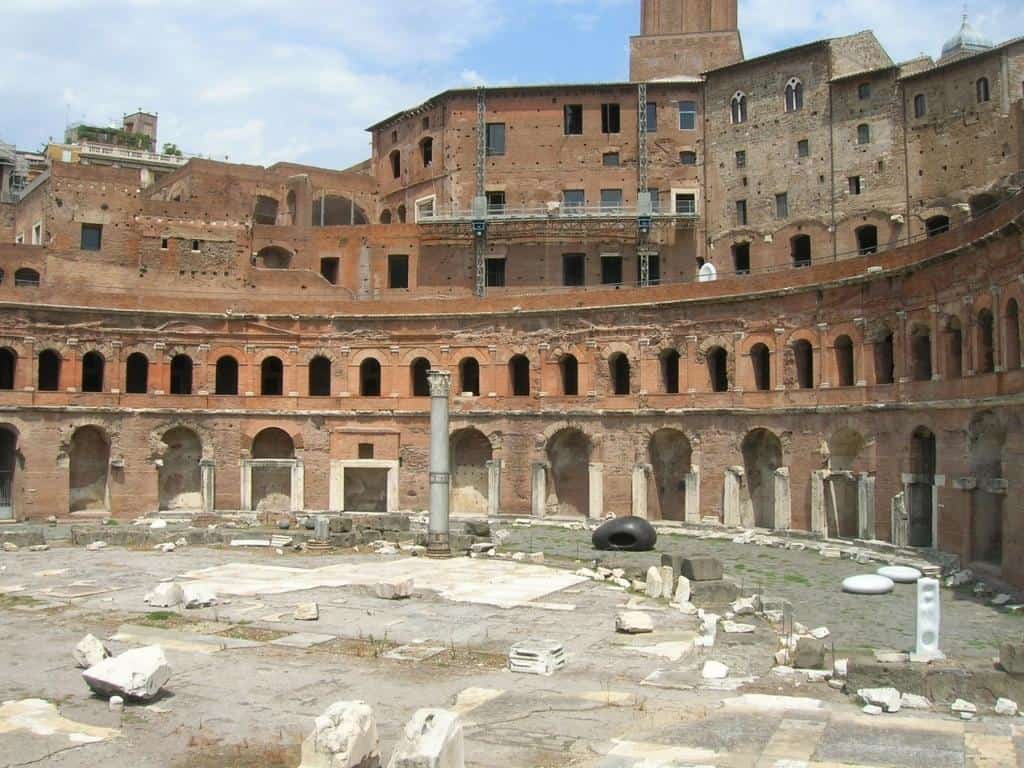
One of the best art museums is the Capitoline Museums, where you’ll be treated to a collection of sculptures, paintings and other objects closely linked to the history of Rome. Along with the Vatican Museums and the Borghese Gallery, the Capitoline Museums are another must-visit for all art lovers.
And also the local square, which is perfectly oval in shape and was designed by Michelangelo. Plus, you have a great view of the Roman Forum and the Colosseum beyond.
Booking tickets for the Colosseum
It is better to book tickets to the Colosseum in advance. From 15. May 2023 buy tickets on the spot too – but the number of tickets is limited and works on a first-come, first-served basis.
Please note: Children under 18 years of age and disabled persons with an escort are admitted free of charge and can collect their tickets from the box office inside the Colosseum.
This was our guide to the Colosseum in Rome. Do you have a question? We’ll be happy to answer it in the comments below. Have a safe journey!
More about Rome
THE BEST PLACES TO VISIT IN ROME: In our article on what to visit in Rome, you will find detailed descriptions of the most beautiful places, including information on admission fees and opening times. We also have special guides for the monuments of ancient Rome or the best museums in Rome.
We’ve created a detailed guide to the Vatican that tells you everything you need to know before your visit.
Read the guide for Vatican Museums to avoid queues on site. In the next article you can see 25 photos of the interiors of the Vatican Museums. What not to miss in the Sistine Chapel is covered in a separate article.
ITINERARY FOR ROME: Get inspired by our itinerary for Rome in 3 days. You only have one day? The itinerary for Rome in 1 day will help you plan the perfect trip.
ACCOMMODATION IN ROME: We’ve created a detailed guide on where to stay in Rome (best neighbourhoods and accommodation on a budget, a map and how to get from your accommodation to the sights or the airport).
HOW TO ENJOY ROME: For tips on the best things to do in Rome, check out our article on what in. We also share some tips on how to save in Rome and more than 35 tips for travelling around Rome. In a separate article, you can find out about all the ways to get from Fiumicino Airport to the centre of Rome.
Summary – Colosseum in Rome
The Colosseum is located on the southern edge of Rome’s historic centre. It is easily accessible on foot from the centre, Termini Station and by public transport (the metro stops right at the edge of the Colosseum).
As of 15 May 2023, reservations are no longer required for the Colosseum. However, the number of tickets on site is limited and you can’t be sure of getting in without booking in advance.
You can buy tickets to the Colosseum book at this link . This will allow you to skip the queue on the spot. You can then print your ticket or simply scan them from your mobile phone on entry. At the Colosseum you will go through the entrance reserved for individuals.
Full admission to the Colosseum is €16 and reduced admission for EU citizens 18-25 is €2. Admission is free for those under 18 years of age. Prices are valid for on-site purchases, there is always a fee for online booking. You can also get free admission with the Roma Pass. More information can be found in the article.
